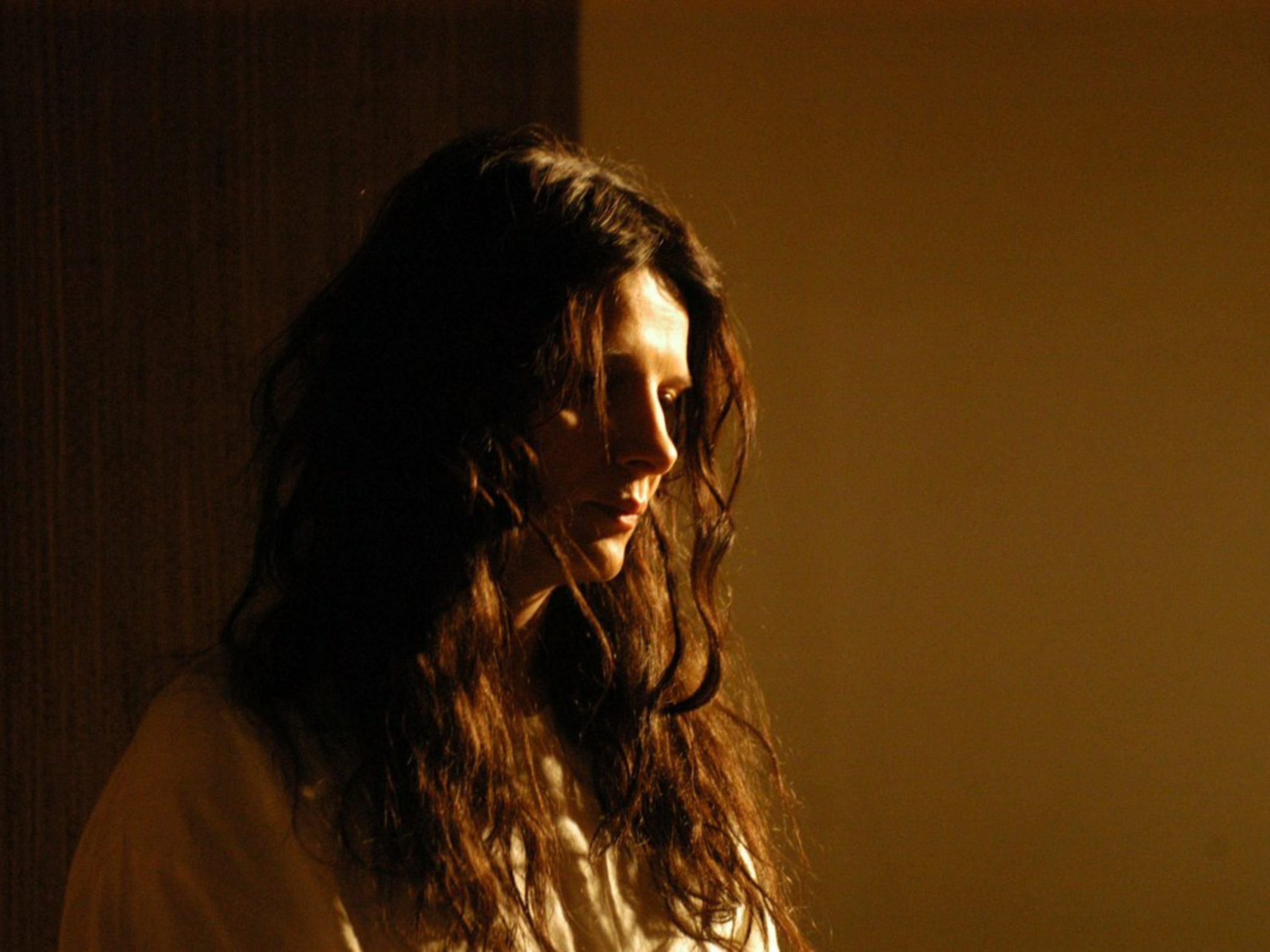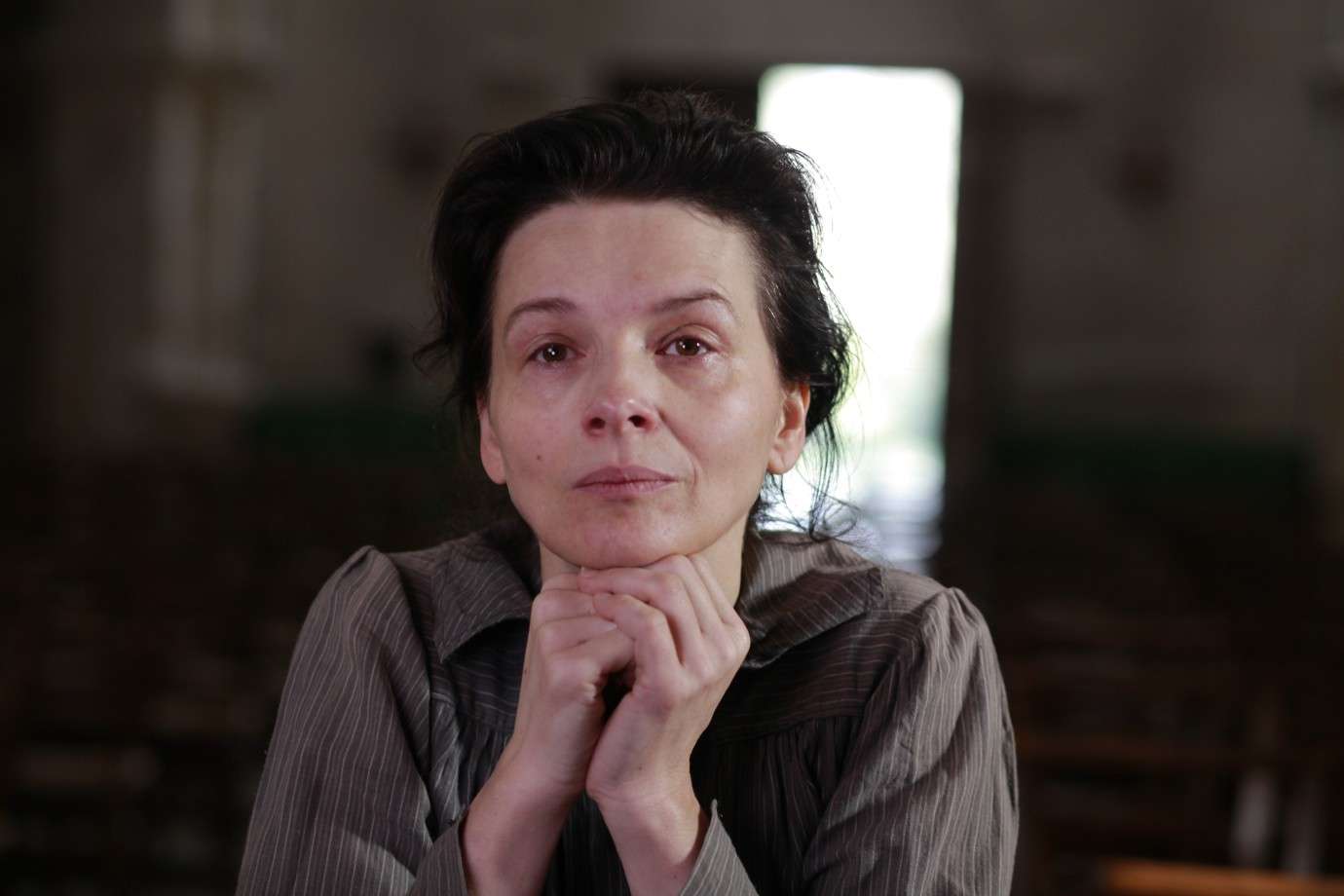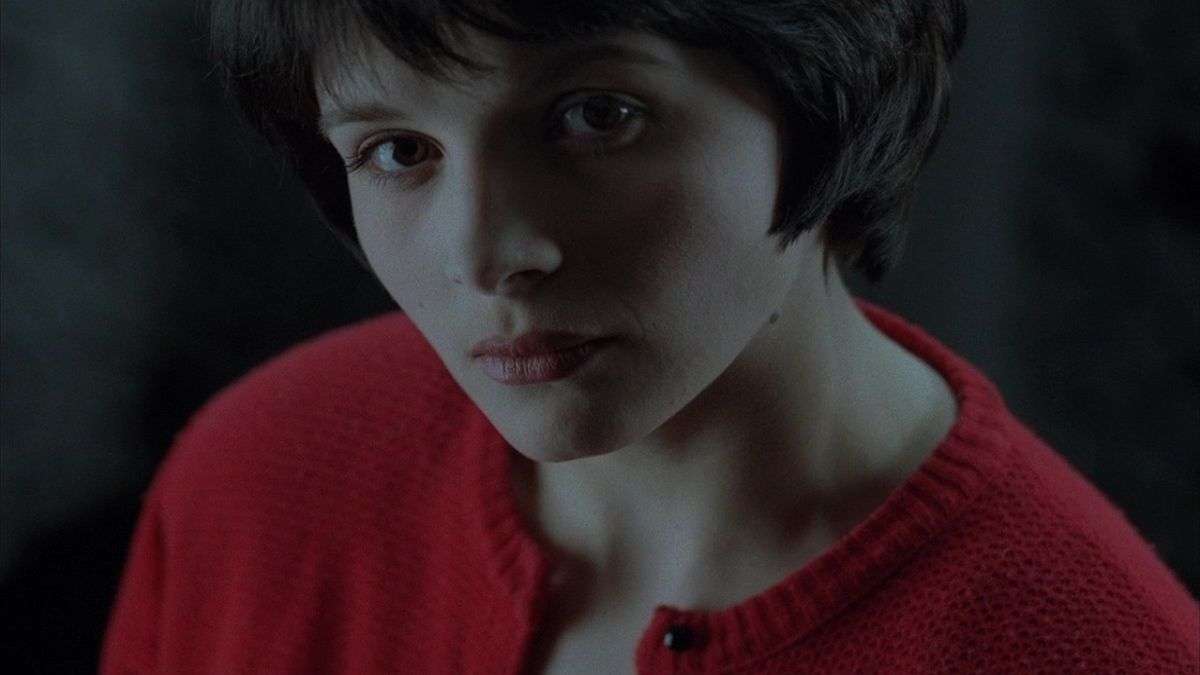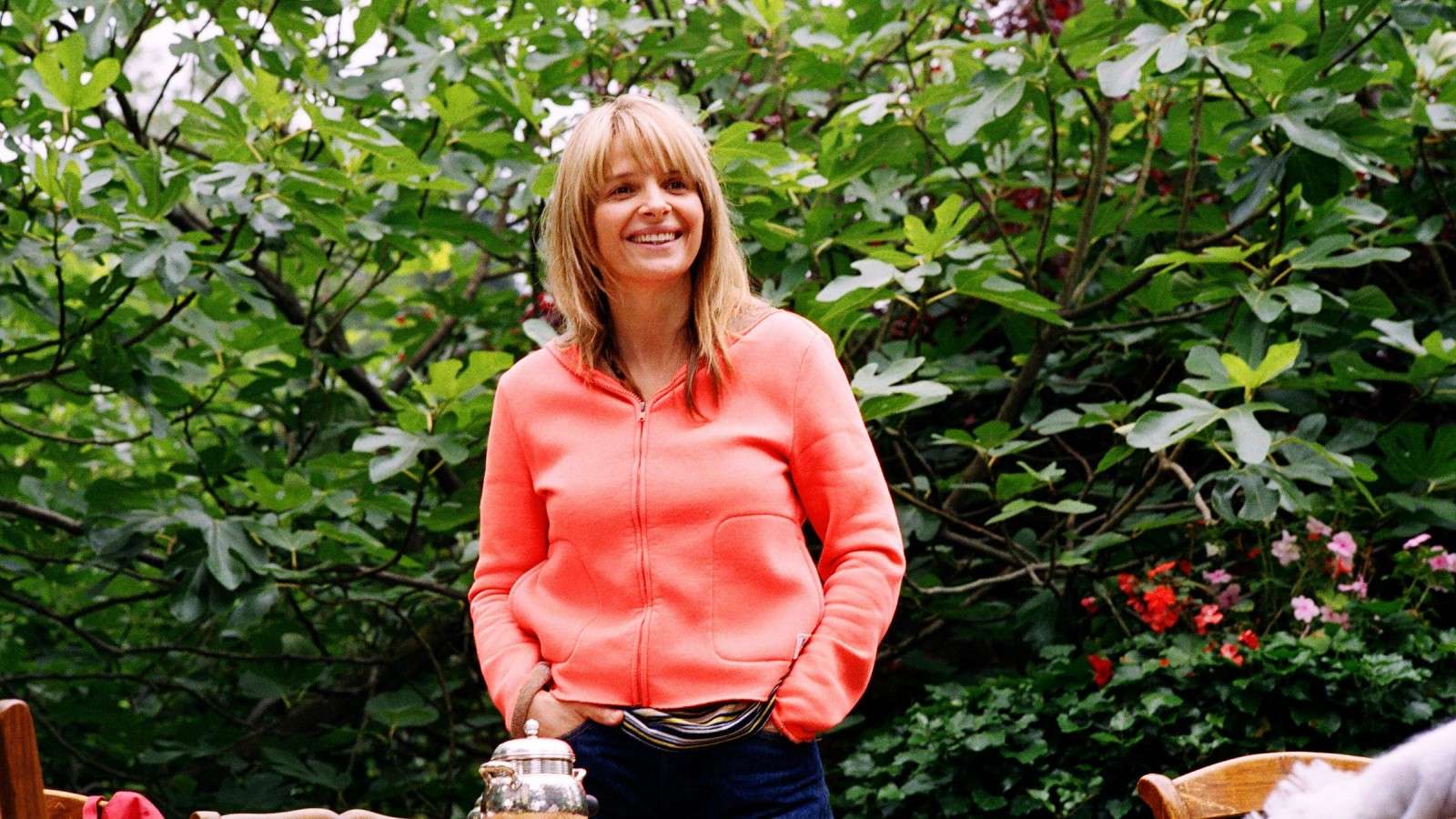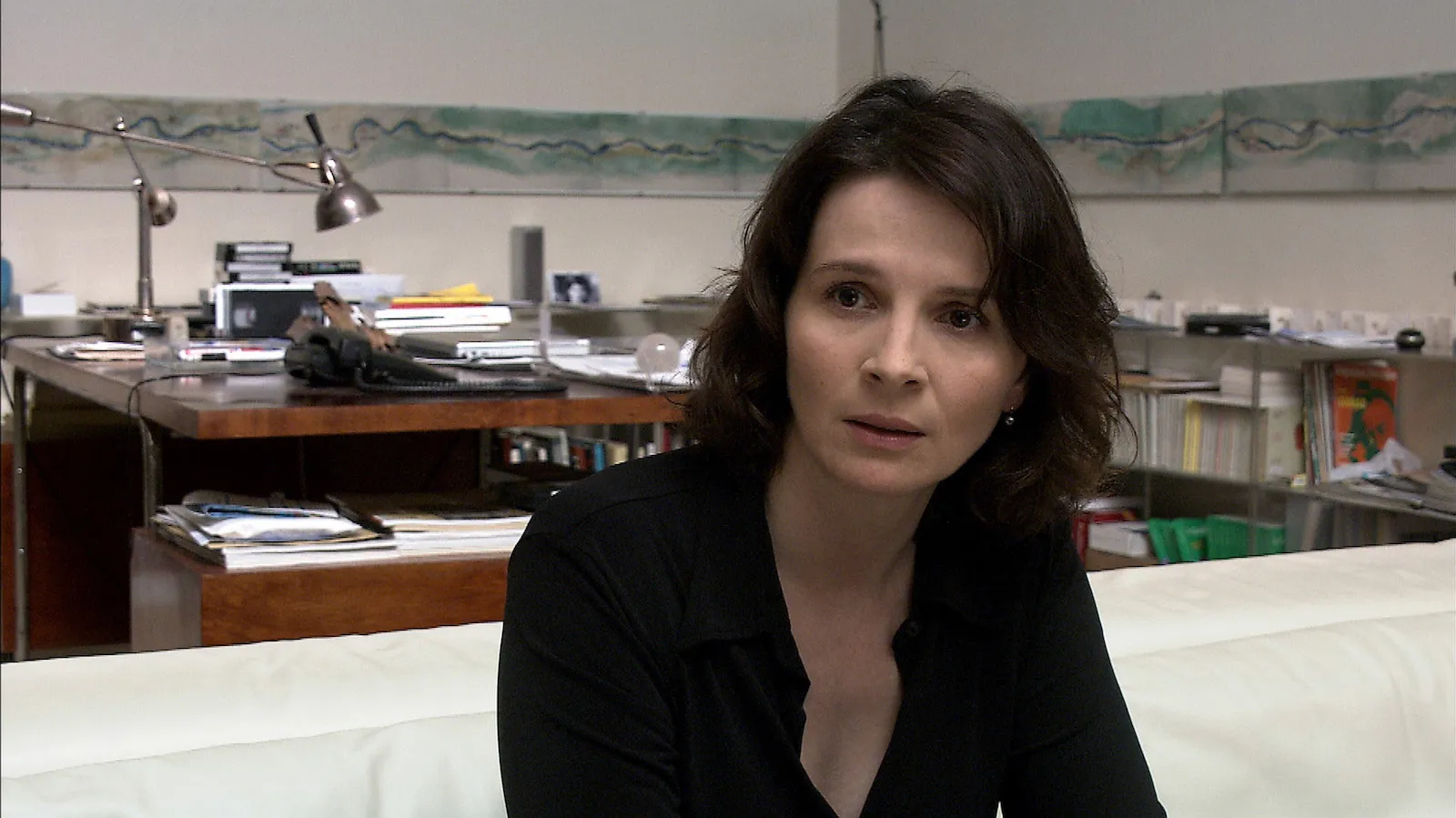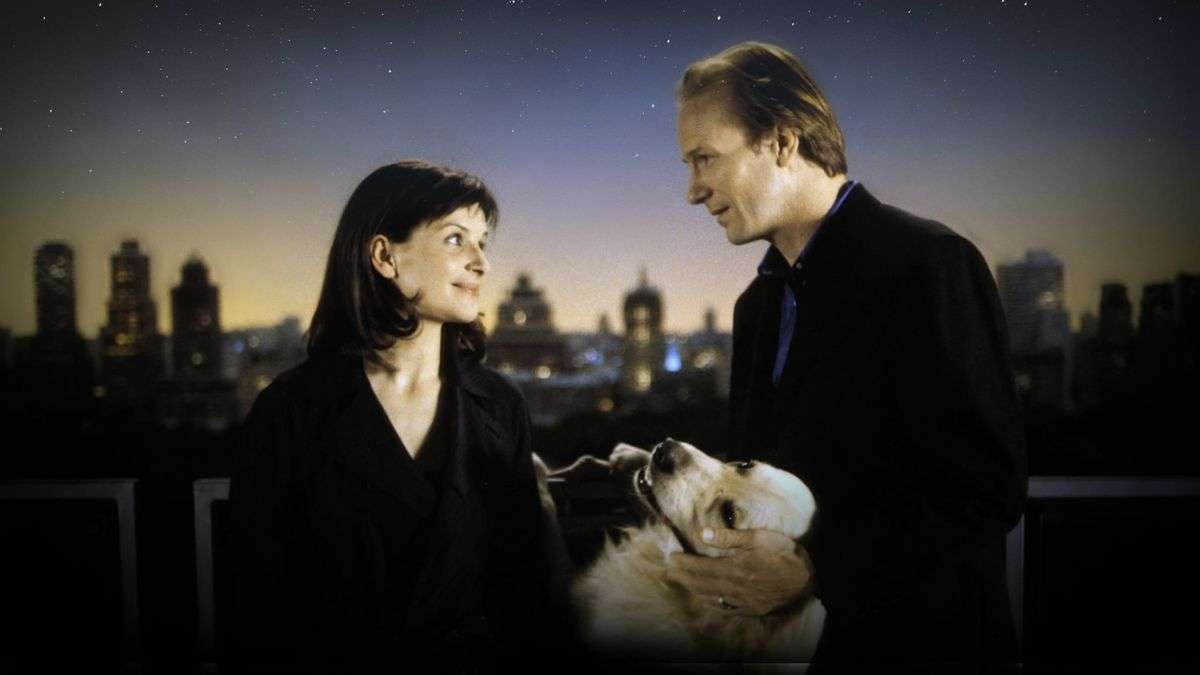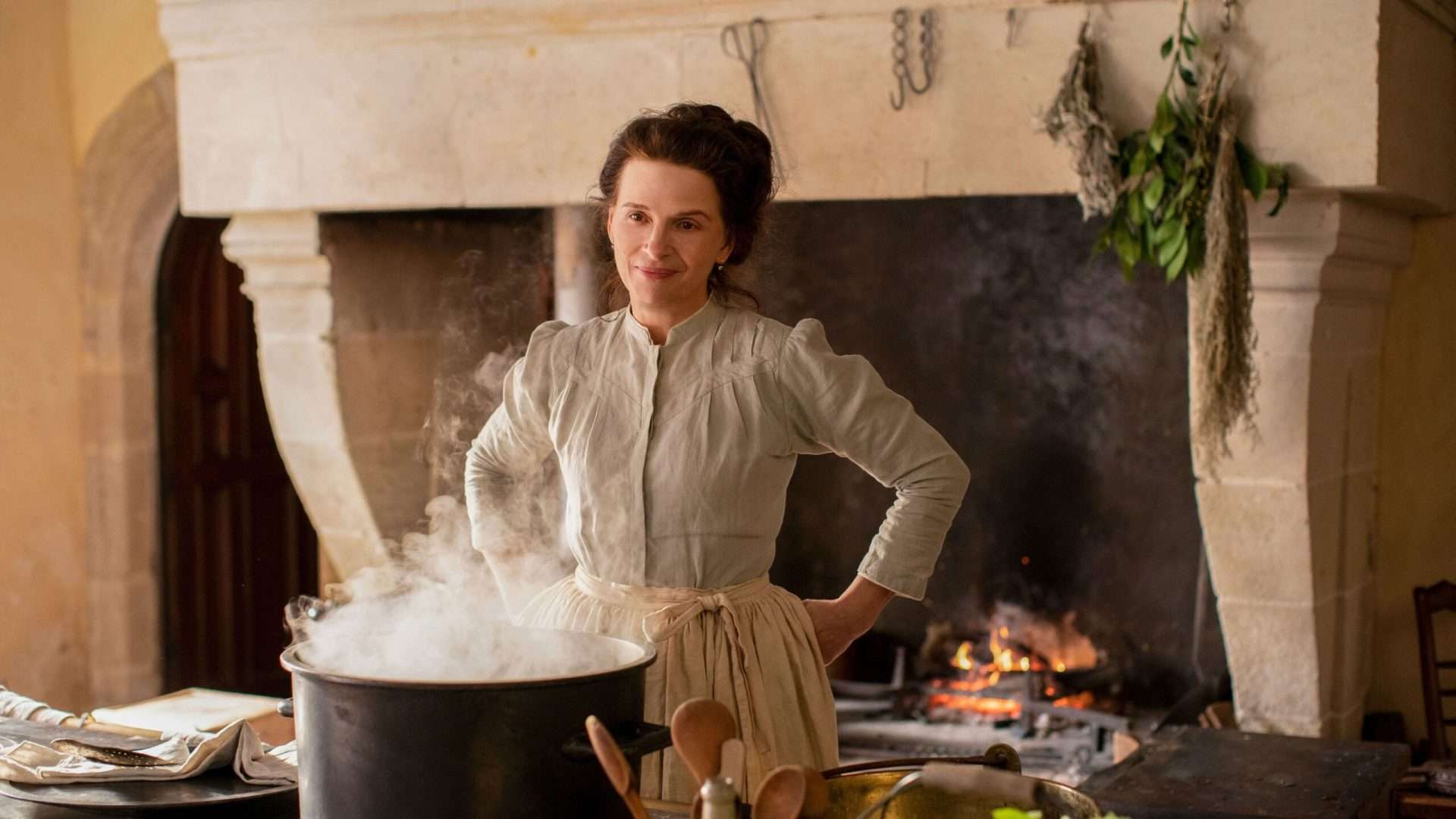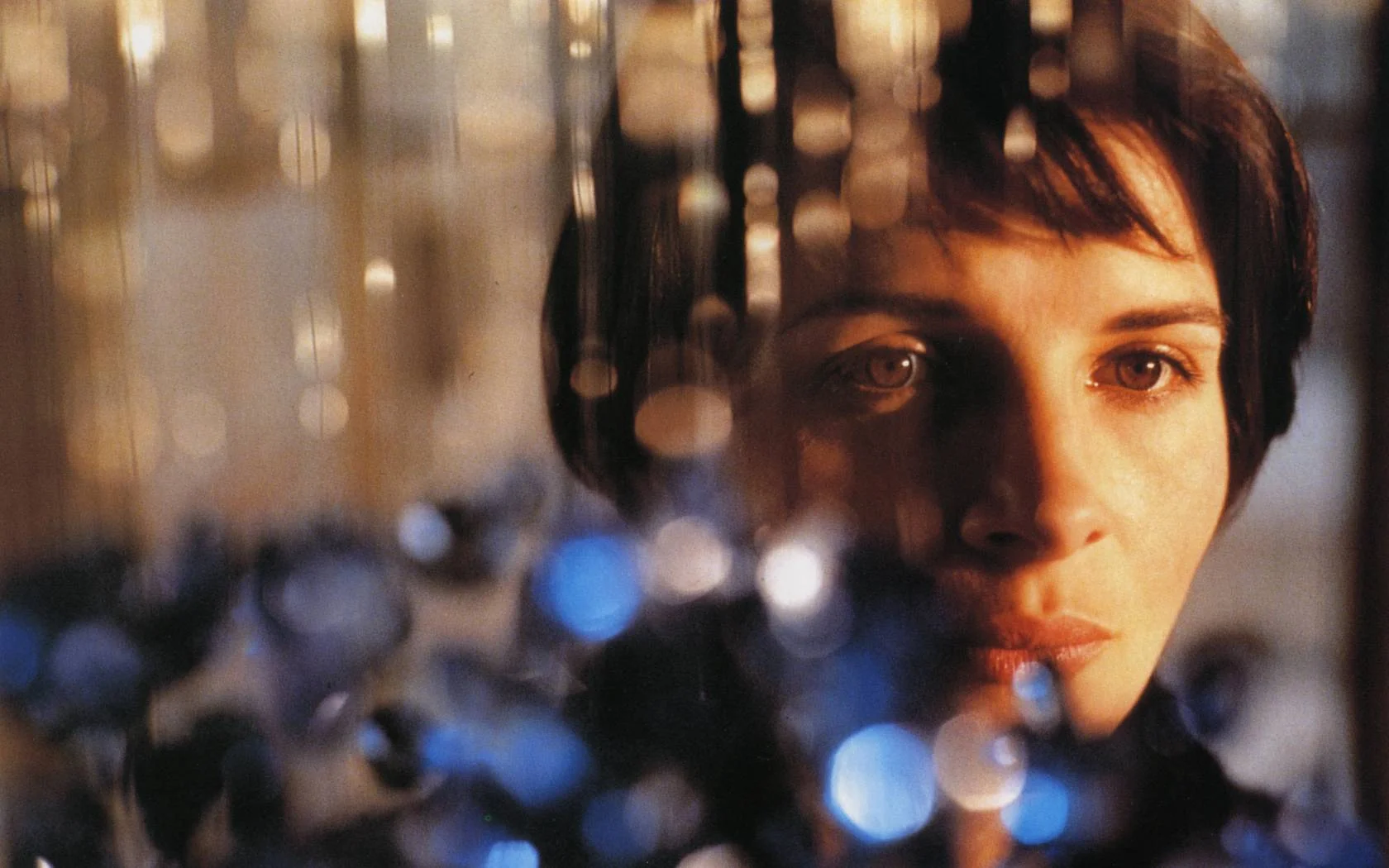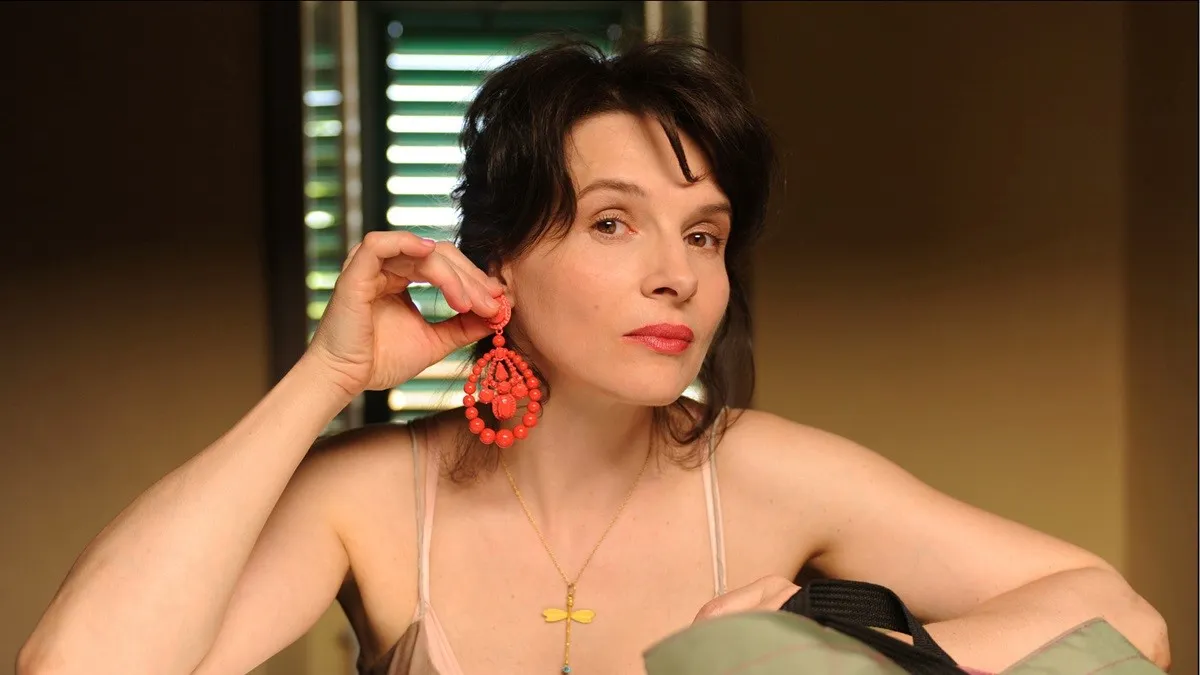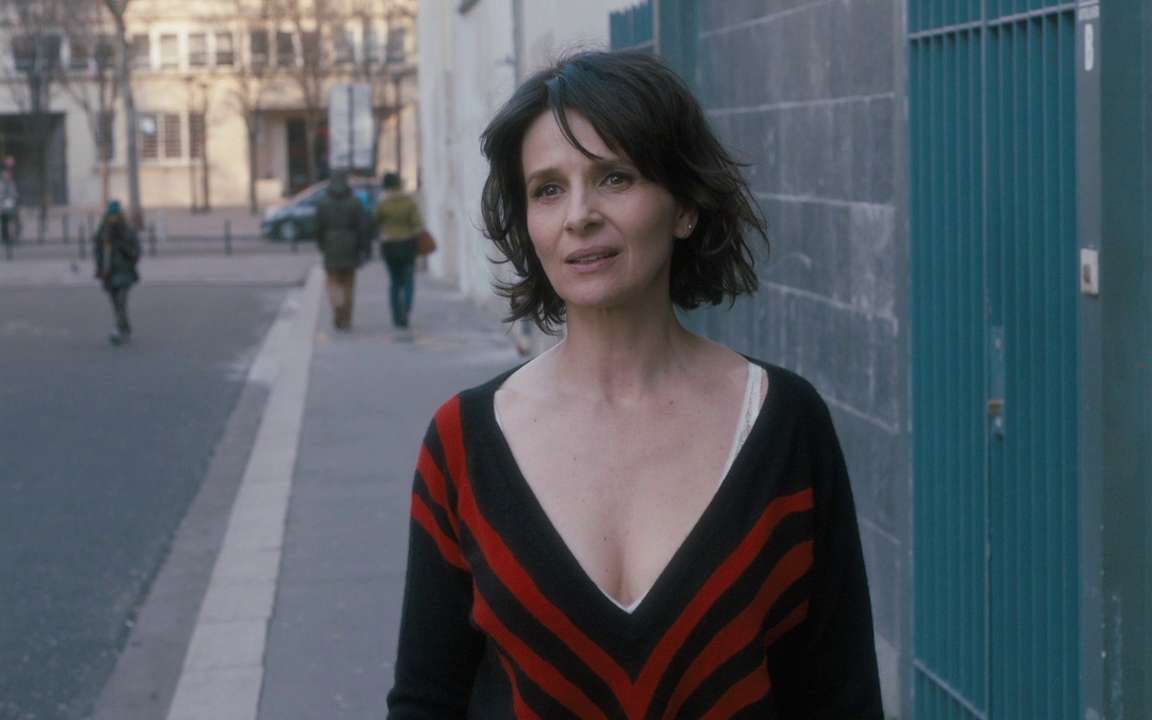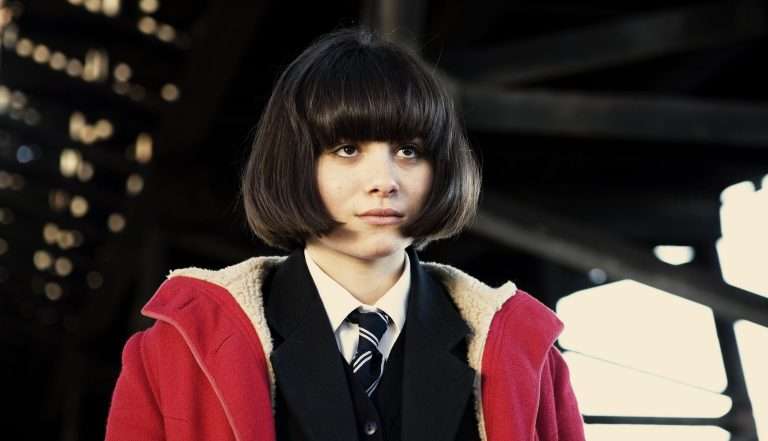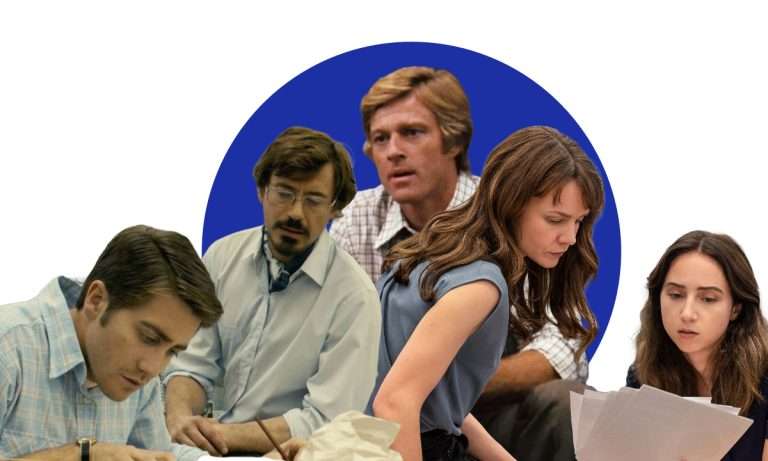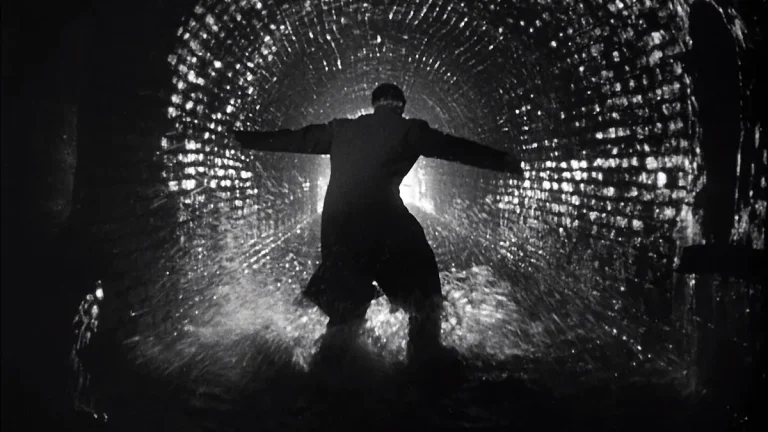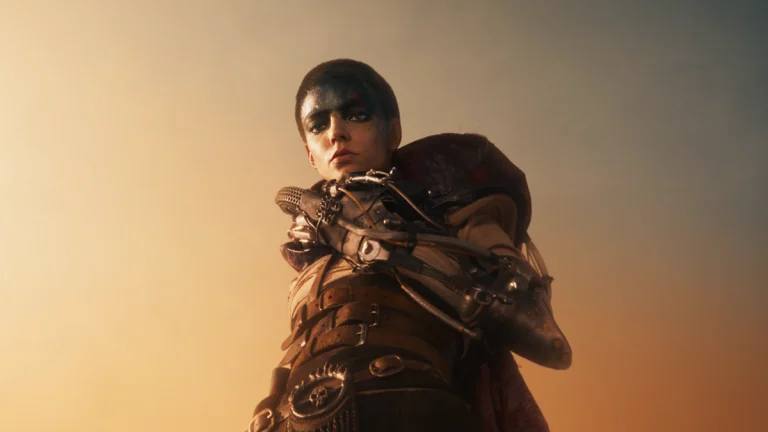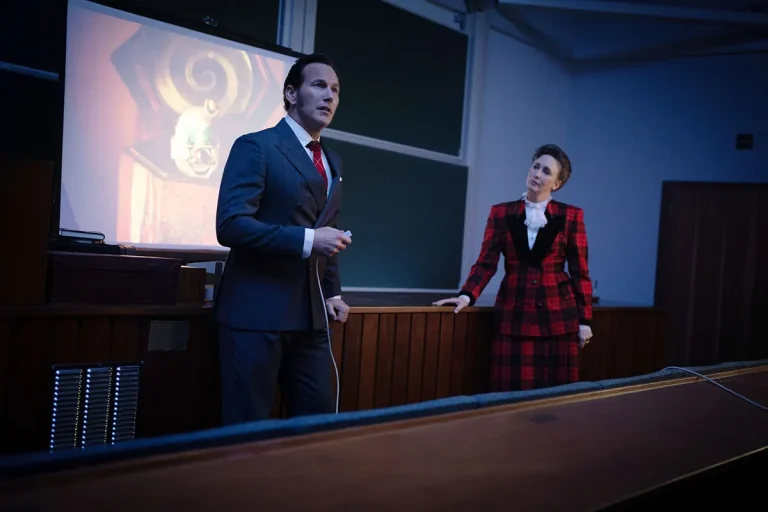Juliette Binoche has deservingly carved out her place as perhaps her generation’s most recognizable French performer. Godard, Denis, Haneke, Kiarostami, Carax, Malle, Kieslowski, Cronenberg, Kore-eda, Hou Hsiao-hsien, Akerman, and Ferrara – just a few of global cinema’s titans who have lined up to work with this indomitable performer over the last four decades. Her face has a potency that traverses genres and borders, her vivid features capturing the burning empathy that defines her greatest roles.
Indeed, it was her features that first attracted the attention of Jean-Luc Godard. He spotted a photograph of her taken by her then-boyfriend and gave her a supporting role in his iconoclastic Biblical retelling, Hail Mary, in 1985. Dozens of leading roles and countless accolades would follow, most notably the Academy Award for Best Supporting Actress for 1996’s The English Patient. Since the turn of the century, she has become something of an institution onto herself. The name ‘Binoche’ on a movie poster has become a signifier of quality unrivaled among her peers, and she has invested her considerable dramatic gifts into some of the most intriguing and engaging auteur projects in recent memory.
Now, she graces the poster of the Cannes Film Festival and is the subject of many a fawning retrospective, but this article is about the performances and roles that made her famous and have sustained her presence in the French film industry and beyond.
10. Mary (2005)
This critically underrated film from American renegade Abel Ferrara is a compelling metafiction where Binoche stars as an actress consumed by her performance as the Virgin Mary. Her iconoclast director, played by Matthew Modine, is trying to ‘rescue’ her from her spiritual odyssey but only to serve his own self-perception as a free speech vanguard and theological auteur. Throw TV host Forest Whitaker, his wife Heather Graham, and his mistress Marion Cotillard into the mix, and there’s quite a lot to the yarn that Ferrara is spinning here, but it all comes off thanks to the gifts of the performers.
Binoche may not have enough screen time to fully convey the weight of the virgin birth. Nevertheless, she’s the fulcrum of the drama and a gripping screen presence as ever. Like many films about films, “Mary” reflects on how we construct fiction in life and society, and the religious pulse of the project renders this reading particularly exhilarating. The New Testament is so shrouded in its own sense of mythos and legend, yet society’s fundamentalist forces bind on-screen depictions to draw controversy for their ostensible lack of realism. Binoche is, therefore, skilfully playing two roles: Mary and her cinematic construction. It is indeed hard to think of many other actresses capable of conveying both with such aplomb.
9. Camille Claudel 1915 (2013)
Camille Claudel is a French national treasure immortalized further by Isabelle Adjani’s Oscar-nominated performance in the 1989 biopic. It was a tough act to beat, but in 2013, Binoche and director Bruno Dumont resurrected the topic for a thrilling character study that rests almost entirely on Binoche’s screen presence. Dumont’s early career was marked by fairly brutal examinations of humanity, part of the so-called New French Extremity, and here he expresses a similarly bleak worldview. However, in his advancing years, accompanied by the pained contours of Binoche’s performance, this is a more grounded and mature perception of nihilism. Camille Claudel may be spending her days desecrating her own work and swearing vengeance upon her ex (fellow artist Auguste Rodin), but the light that inspired her masterpieces perseveres.
Binoche’s voice resounds in the film, as well as her face. The script is framed as a series of letters from Camille to her brother from the mental asylum where she is tragically housed. There’s a definite Bresson influence to the shot composition and pacing, with a new spin on his intractable realist sensibilities provided by Binoche’s narration and undeniable movie star presence. As one French icon embodies another, decades of cultural baggage any viewer (particularly in her native country) will attach to Binoche adds nuance to the film and its leading performance. This is an essential and often overlooked viewing for anyone aiming to receive the full breadth of Binoche’s filmography.
8. Mauvais Sang (1986)
In one of Binoche’s earliest starring roles, visionary director Leos Carax combined her talents with his usual leading man Denis Lavant and a further who’s who of talent, young and old (Julie Delpy, Michel Piccoli). The result is a landmark of the Cinema du Look, a short-lived movement in France in the 1980s that specialized in stylish films whose dazzling visuals often served to (deliberately and cleverly) mask a pungent sadness in the character work. Mauvais Sang weaponizes its high concept and colorful vistas to deliver a substantial tome on love in the time of AIDS.
Binoche plays the alluring lover of the aging criminal Marc, whom Denis Lavant’s protagonist falls for. Her Gallic bowl cut and arresting brown eyes are enough to lay the foundations for the future decades of her stardom, as is the unique anti-chemistry she shares with her co-star. Their conversations are deadpan but framed by Carax’s camera in a way that locates the base instinct underlying their words. They fall in love against the backdrop of an epidemic among young lovers in Paris, a sexually transmitted disease caused by sex without commitment. In an era of moral panic about such issues in the 1980s, Carax cannily investigates the lines between affection, sex, and romance, with Binoche’s indelible presence a key tool he uses to ask his questions.
7. Summer Hours (2008)
If you asked the layperson their idea of a French movie, they might describe something like an Assayas film. After breaking through with the postmodernist masterpiece “Irma Vep,” the director has since interjected his experiments with a new groove, telling incisive, human stories of the French middle class, with Binoche a recurring muse. Their most fulfilling collaboration so far is “Summer Hours,” in which the death of their mother forces three typical Assayas protagonists to face each other and life’s eternal truths. Anchored by three invigorating central performances, Binoche’s prime among them, the film is simultaneously a rock-solid character drama and an endearing slice of naval gazing over the value and legacy of art.
Binoche’s mother left among her possessions several valuable artworks, and much of the interpersonal conflicts between her children after her death enmeshes with interesting debates about what to do with these masterpieces. The siblings are under various state and legal pressures to flog their assets but cannot agree between themselves. Frédéric, the eldest, holds a sentimental value for his mother’s items, which are not shared by Binoche’s character, who lives abroad. In the film’s bittersweet coda, however, we are reminded that examining the past has its limitations, and a genuinely positive message about the future is held within.
6. Caché (2005)
Austere Austrian auteur Michael Haneke’s best-remembered film “Caché” deals in frank terms with the brutal legacy of French colonialism. Binoche and fellow French superstar Daniel Auteuil are a middle-class couple whose life of wining and dining in Paris is interrupted by anonymous videotapes being posted through their front door. The results return Auteuil’s character to his youth, and through a larger allegorical reading, we see France’s deadly history of corruption and exploitation. The leading stars are perfect foils for Haneke’s pontifications while simultaneously grounding the drama in the environment of an actual human family.
Haneke once famously said that he despised political cinema, which he defined as the cinema of manipulation. Considering how elegantly and precisely he articulates political viewpoints here, it seems an implausible comment. Shrewdly, the director hides this meditation on collective trauma within the confines of a genre film: despite having all the hallmarks of a boring Cannes drama, this is genuinely thrilling. Binoche’s performance especially is a driving force, a face of privilege that becomes increasingly unsettled. A lesser actress would concede to a performer of Auteuil’s power to lead the film, but Binoche shines brighter still in this chilling, clinical classic of the 2000s.
Also Read: Why Are Michael Haneke Films So Disturbing?
5. A Couch in New York (1996)
Chantal Akerman may be best known for her avant-garde classic “Jeanne Dielman” and other equally angular explorations of femininity. Still, for a brief, wonderful moment in 1996, she transitioned to the world of romantic comedy. Binoche stars opposite fellow Oscar-winner William Hurt as a disillusioned French woman who room swaps with a New Yorker and discovers herself among the skies of the Big Apple. The plot is a sort of proto-The Holiday, and whilst Akerman’s experimental side doesn’t shine through, her indelible sense of empathy for human subjects certainly does. It’s hard to think of a romantic comedy that so shrewdly conveys the relationship between location and emotion, between happiness and melancholy in the big city.
The twists and turns the plot takes across the Atlantic are whimsical and charming. Binoche’s wide-eyed European embraces New York with an infectious giddiness any foreigner can relate to. Due to his innate cynicism, her relationship with Hurt takes the long way around, making the ending all the more satisfying. They have a tangible on-screen chemistry that overcomes the culture shock and leaves you thinking, is there anything Akerman or Binoche can’t do? It is a delight from beginning to end, though frustratingly hard to find through legal channels at the moment.
4. The Taste of Things (2023)
“The Taste of Things” is a movie that offers many pleasures. Firstly, there’s the food: meticulously prepared, delicately cooked, and gorgeously served. Director Tran Anh Hung’s camera swirls around each dish, often in candlelight, accentuating the colors and juices. Then there’s the chefs themselves, played by Binoche and her real-life ex Benoît Magimel. Watching actual lovers on screen always elicits a charge, especially in this movie’s mature exploration of aging relationships. The chef Dodin and his personal cook Eugenie (Binoche) share a love that goes beyond romantic affection or sexuality. They thrive in each other’s companies as artists and as people, hence the latter’s hesitancy to be married and constrain their love with a title and hierarchy.
In this sense, Hung perfectly maneuvers the relationship between style and substance. Cooking is portrayed as an art form, certainly, but it is never overlooked how the basics of food reflect how we interact with others. Food is an essential source of sustenance as well as a loaded cultural signifier that can highlight systems of class. Dodin may technically be Eugenie’s superior, but their love for food is a vessel through which they challenge this. A touching ode to gastronomy and matrimony, be sure to catch up with this if you missed it last year.
3. Three Colours: Blue (1993)
Binoche won her first (and to date only) César award for her role in “Three Colours: Blue,” Kieslowski’s masterful trilogy centered on France’s national tricolor and ideals. She plays a woman paralyzed by grief after the deaths of her husband and child in a tragic accident, resulting in a dark exploration of what the director labeled “emotional liberty.” Binoche’s performance explores the perverse sense of freedom one can achieve from losing everything there is to live for. As a consequence of her loss, the protagonist reframes her relationship with the world around her, initially as a recluse and then as a changed person who is ready to face it all alone.
The titular color blue permeates throughout, reflected off of glass windowpanes and essential to Binoche’s wardrobe. This distinct visual identity recurs across the trilogy and is never more beautifully, devastatingly effective than here. Binoche would return for a brief cameo at the end of “Three Colours: Red” the following year to bookend the trilogy, illustrating how her radiant screen presence epitomizes the tortured insights into humanity in which Kieslowski has always specialized. Kieslowski himself would soon retire and shortly thereafter die tragically young at 54, but his legacy is secure in such potent films as this one.
2. Certified Copy (2010)
The original and the phony, the authentic and the fabricated. The thin line between theft and appropriation. This heady subject matter is at the forefront of “Certified Copy,” Abbas Kiarostami’s modern classic, which won Binoche the Best Actress award at Cannes in 2010. It was a thoroughly deserved victory, too, her character plausibly vacillating between caring mother, careful curator, and partner to the academic James Miller, expertly played by opera singer William Shimell. The two appear to be strangers but become gradually intimate in ways that suggest a further interior layer to their connection. The answers are never clear, and nor should they be. The late Kiarostami spent his career making films that balanced the humane and the metatextual, and “Certified Copy” is perhaps his magnum opus.
The two characters’ academic backgrounds are well-suited to Kiarostami’s camera, which keenly explores the beautiful Tuscan landscape in long tracking shots through buildings and the rural idyll. Sub-textually, there’s something enlightening about the pulsating globalist heart of the film – directed by an Iranian, anchored by a French superstar, set in Italy, and spoken in English. Despite its cerebral themes, “Certified Copy” is worthy of such credentials as its immediate sensory pleasures are enough to take any viewer back. As has been the case many times in this list, Binoche’s genius is in grounding the thought experiments of revered auteurs into dramas with a relatable human core.
1. Let the Sunshine In (2017)
“Let the Sunshine In” is the kind of middle-aged star vehicle most of Hollywood would bite your arm off for. In Claire Denis’ touching dramedy, Binoche is a divorcee seeking new love in her life and work. She’s an accomplished career woman who belongs to an upper-crust milieu but longs to break free through minor sexual and social transgressions. Her character contains multitudes, fleshed out into myriad dimensions by Binoche’s physicality (including the multiple sex scenes) and piercing line delivery. Credit should, of course, extend to Denis, another bastion of feminine brilliance in the male-dominated French film industry. Whilst “Beau Travail” or “White Material” may be more explicit conduits for her preoccupations as a director, “Let the Sunshine In” still brims with the formal mastery and human insights that we’ve come to expect.
The most pleasing aspect of the movie is its reticence to please. The viewer and Binoche’s character Isabelle are repeatedly forced to confront the socially constructed fantasies and fictions of romance in juxtaposition with the real thing. The reality in love is always messier, the answers are always less clean cut, and in learning to overcome her own shortcomings and embrace the flaws of others, Isabelle undergoes a fully functioning and fulfilling character arc. It may be a feat of excellent writing and directing, but there’s only one woman who could pull this role off.

